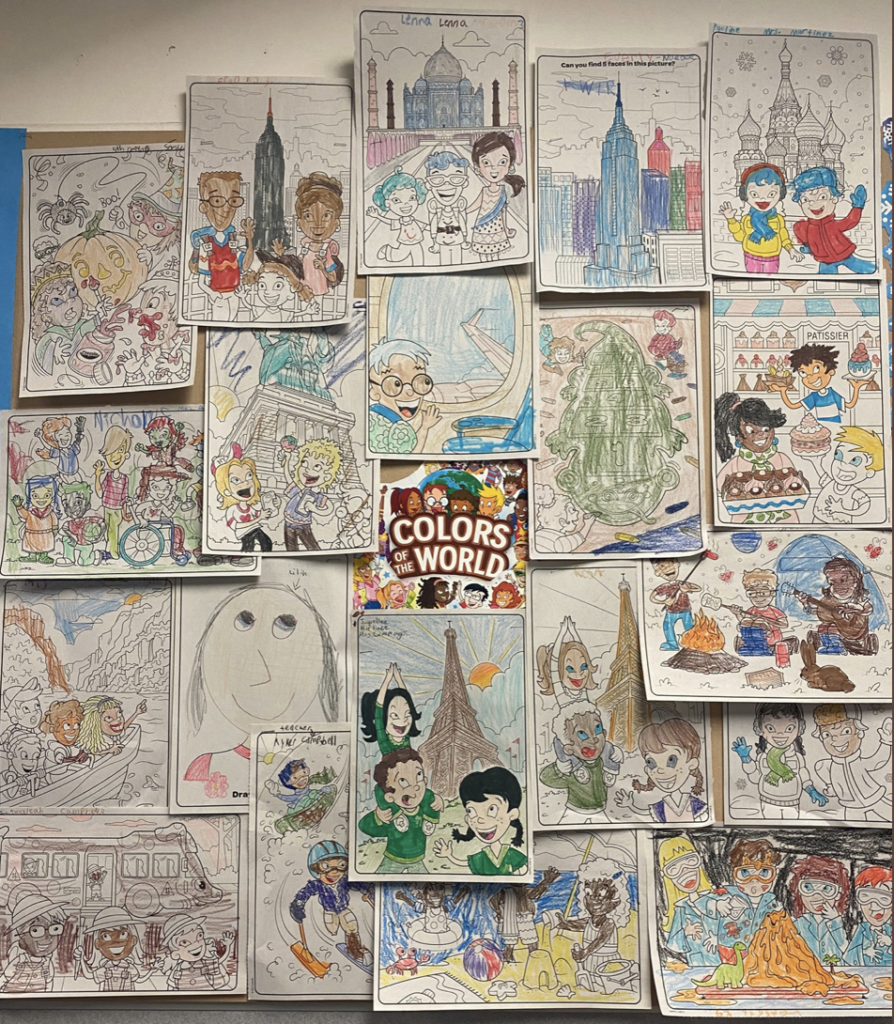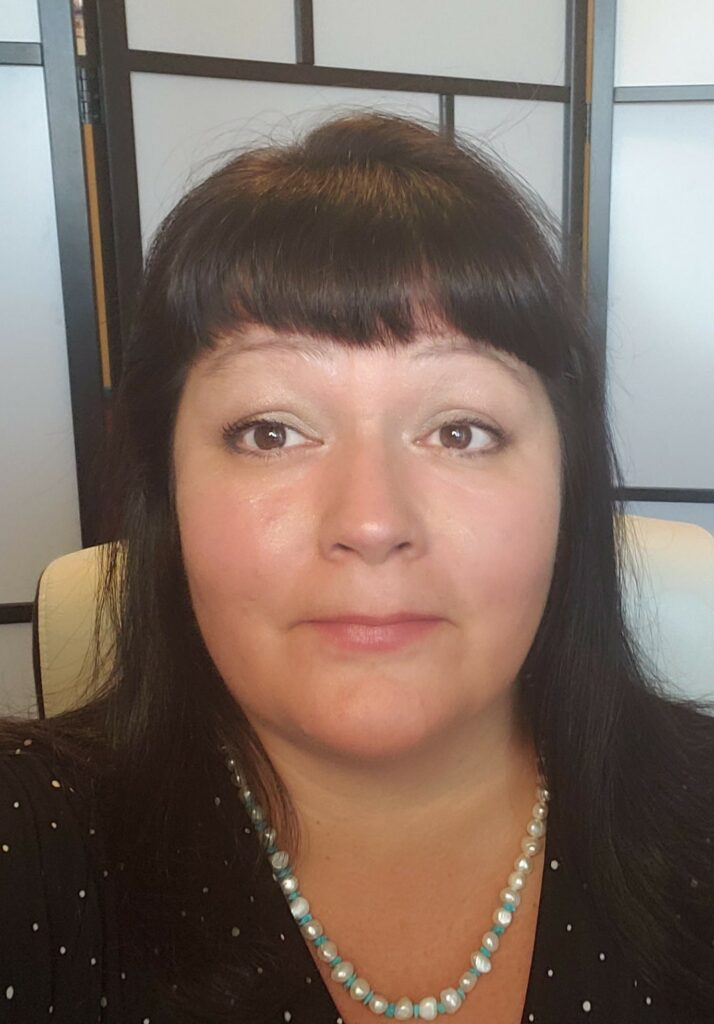Dr. Amy Pickens helps BVSD students find a sense of belonging
Impact on Education recognizes that opportunities are not level in education across racial and socioeconomic lines. Our programs and investments help to identify and remove inequities in public education, ensuring all Boulder Valley School District (BVSD) students receive an excellent and equitable education.
Today we want you to meet someone working tirelessly to advance equity from inside the district. Amy (Nelson) Pickens is starting her fourth year working with BVSD administration and currently serves as the Director of Equity and Community Engagement.
We’re also thrilled to share that Amy is one of three new members joining our Board of Directors in September 2023! You’ll learn more about all of our new members soon.
What does equitable education mean to you?
Every stakeholder, every individual in our system – student, staff member, family, community member – exists in a positive and inclusive culture of belonging. Equity is honoring and affirming identities, cultures, individual strengths, language, and interests.
During the 2022-23 school year Impact on Education provided funding for racial trauma and healing counselors to work with BVSD students and families.
It’s ensuring we are providing equitable opportunities, access, and resources to meet the uniqueness of each of our students. It is when every member of our BVSD community feels seen, heard, valued, and supported within both their school and larger BVSD community. It is all these things and all encompassing – equity touches everything and everyone. It is both individual and collective. It is using an equity lens with every decision we make and honoring the voices closest to the inequity we are trying to address.
Equitable education means that students know that their voices, identities, hopes and dreams, families, and communities are valued.
How did your experiences teaching abroad and in special education help prepare you for this role?
We all view the world through our own unique lens, one that is informed by our education, our beliefs, and our lived experiences. The lens in which I view the world and educational systems was significantly altered after teaching abroad.
I talk often about mirror work and the importance of individual reflection. We need both insight into self and insight into context if we are going to create the change we hope to create.
While working overseas, every one of my students on an Individualized Education Plan (IEP) was completing the rigorous IB (International Baccalaureate) Diploma Programme. Additionally, the vast majority of students I worked with were not learning in their primary language, and many spoke three or more languages. This led me to reflect on my work as a special educator prior to my experience overseas. Was I contributing to other educators viewing students through a deficit lens by focusing too much on their disabilities and not enough on their strengths? While I cared deeply about my students, I was not giving them everything they needed to thrive in their general education classes and I’m thankful my experience teaching abroad helped alter my thinking.
Tell us about the work your team does to advance equity in BVSD.
The work is grounded in building trust and fostering a culture of belonging, but equity touches everything. We work with every district stakeholder, including students and families, district leaders, principals, employees, and our community.
“Everyone wants to feel a sense of belonging. If we can put the foundational pieces into place to build a climate and a culture of belonging, students will thrive.”
Amy Pickens, BVSD’s Director of Equity and Community Engagement
It is not always easy for our educators to apply an equity lens. We all approach this work with our unique lens and our lens is only as extensive as our education, lived experiences, people we encounter, books read, lived experiences, etc.
Part of equity work is consistently taking time to reflect individually on the ways our own lens helps shape our education system and either interrupts or contributes to inequities. This is hard, but necessary work. While we are charged with supporting our staff and providing training, language, tools, and strategies to help build a culture of belonging in our classrooms and schools, the individual work each employee must do is just as critical to our collective equity work.
In our work, we often discuss the systemic barriers – including socioeconomic status and race – to student success. How do you talk about these barriers?
Too often when we are talking about systemic barriers we focus on ‘fixing’ students or families. While the intention may be good, the impact often leads to internalized deficit narratives and validates negative perceptions of students, families, and or their communities.
As educators, we have to continuously reflect on (often referred to as mirror work), name, and disrupt this type of thinking. While it’s important to acknowledge barriers and opportunity gaps, labels such as ‘at-risk’ can be stigmatizing but are often used when discussing systemic barriers to student success.
If we’re going to talk about risk factors, we must also acknowledge protective factors – strengths & attributes of individuals, families, & communities – so that we don’t further contribute to false narratives and stereotypes.
We need to view our students, families, and community holistically which requires us to not only consider the perceived barriers, but also the assets. Using an asset-based approach mitigates and even eliminates risk factors.
What is the Youth Equity Council?
YEC (Youth Equity Council) is an amazing group of students with diverse intersecting identities that advise the district on issues of equity. While I co-founded the Youth Equity Council and help guide their leadership, YEC is an entirely student-led group. Students are recruited in the fall and most of the members are looking for an opportunity to have their voices heard and to create necessary & lasting change.
The founding student leaders graduated this past May and I’m so proud of each of them and their accomplishments, as well as their lasting impact on generations that come after them. Working directly with our youth gives me so much hope and also motivates me to continue tackling equity issues in public education. An individual win is a collective win and moves our work forward.
Read a recent Daily Camera article about the Youth Equity Council.
Bringing her expertise to Impact on Education
BVSD is fortunate to have Amy helping empower students, staff and families in our community – her contributions are critical to the health of the district. We’re eager to see how her work with BVSD continues to evolve and welcome her to our Board of Directors.
BEFORE YOU GO
Impact on Education is an independent non-profit supporting the Boulder Valley School District. We depend on the generosity of our community to put our mission into action.
Will you help us provide opportunities and resources to local students?







